With the Behind The Social Media Campaign Series, supported by Oneupweb, Mashable took an in-depth look at the makings of eight innovative social media campaigns from Ford, Mattel, Internships.com, Old Spice, Toy Story 3, Edge Shaving Gel, The Voice and Buffalo Wild Wings.
Using Twitter, Facebook, YouTube, Foursquare and SCVNGR, among other social tools, these brands executed successful and engaging social media campaigns worth applauding.
This roundup is dedicated to outlining each campaign. If you find a particular campaign interesting, click through to the article to read the full story.
1. Twitter + Random Acts of Kindness = A Successful Social Campaign
 Edge Shaving Gel’s #soirritating Twitter campaign spreads the word about its anti-irritation gel through random acts of kindness. Here’s an inside look at this creative play.
Edge Shaving Gel’s #soirritating Twitter campaign spreads the word about its anti-irritation gel through random acts of kindness. Here’s an inside look at this creative play.
In its first three months, @EdgeShaveZone gathered about 1,500 followers, the #soirritating hashtag was used about 6,800 times, and attention from numerous media outlets contributed to mounting buzz — all of which likely contributed to Edge’s decision to continue the campaign throughout 2011. Mashable recently spoke with the team at Edelman Digital that runs the campaign, about the factors that have contributed to its success.
Read the full story here.
2. How Social Media Helped Toy Story 3 Win at the Box Office
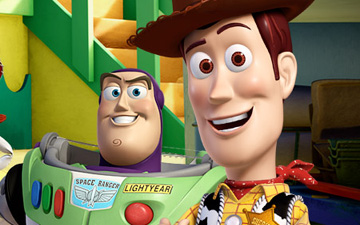 Toy Story 3 was one of the biggest films of 2010. As Pixar’s 11th full-length film, the third and final chapter in the world of Buzz Lightyear and Woody hit theaters in June 2010.
Toy Story 3 was one of the biggest films of 2010. As Pixar’s 11th full-length film, the third and final chapter in the world of Buzz Lightyear and Woody hit theaters in June 2010.
Months before that, Disney and Pixar embarked in a wide-scale marketing blitz that covered television, print and social media. Using Facebook and YouTube to help promote the film, the studio raised awareness and successfully targeted demographics that don’t traditionally flock to Disney animated feature films.
Read the full story here.
3. Lessons Learned From The Old Spice Campaign & Its Imitators
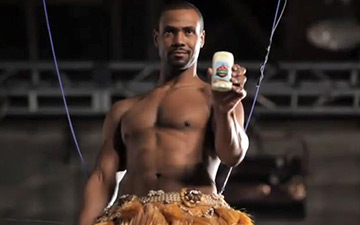 Charles Caleb Colton once said, “Imitation is the sincerest (form) of flattery.” Obviously, Mr. Colton was not talking about the success of the Old Spice campaign (seeing as how he lived during the 1700s), but we’re sure he would have reiterated that sentiment if he were to see how many spinoffs the aforementioned marketing miracle has inspired.
Charles Caleb Colton once said, “Imitation is the sincerest (form) of flattery.” Obviously, Mr. Colton was not talking about the success of the Old Spice campaign (seeing as how he lived during the 1700s), but we’re sure he would have reiterated that sentiment if he were to see how many spinoffs the aforementioned marketing miracle has inspired.
The campaign launched just over a year ago — centered around the theme “The Man Your Man Could Smell Like” — and captured the imagination of the public. Case in point: The original ad has garnered more than 30 million views to date on YouTube.
Its success also earned Old Spice a legion of students, as it were — folks who cribbed ideas from the ads and applied them to their own marketing efforts. Mashable chatted with a few of these businesses — who have all enjoyed success from following the Old Spice model — about what aspects of the campaign worked for them.
Read the full story here.
4. Was the Charlie Sheen Tweet a Win for Internships.com?
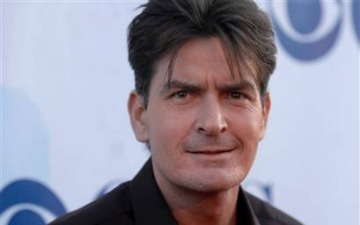
When it comes to brand building, there are basically two schools of thought: “Build it and they will come” and “brainwash the masses.”
The latter is based on the belief that any publicity is good publicity. If you get your name out there, the rest will fall into place. A good example of this philosophy is GoldenPalace.com, which recently bought Justin Bieber’s hair, and in the past has purchased William Shatner’s kidney stone for the free publicity.
At the moment, Internships.com fits the latter category as well. If you’ve heard of the brand, it’s most likely due to a single effective marketing campaign: An endorsement by Charlie Sheen via Twitter.
Read the full story here.
5. How Barbie & Ken Were Reunited by Social Media
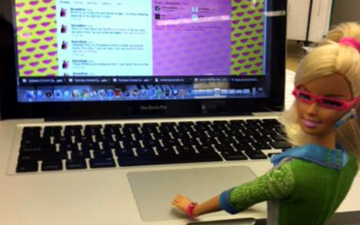 Exactly seven years after their controversial split on Valentine’s Day in 2004, America’s favorite plastic lovebirds reunited, sending the socialverse down memory lane. In celebration of Ken’s 50th anniversary and just in time for the Valentine’s Day release of its Sweet Talkin’ Ken doll, Mattel launched a grandiose marketing campaign to reunite its iconic doll couple, Barbie and Ken.
Exactly seven years after their controversial split on Valentine’s Day in 2004, America’s favorite plastic lovebirds reunited, sending the socialverse down memory lane. In celebration of Ken’s 50th anniversary and just in time for the Valentine’s Day release of its Sweet Talkin’ Ken doll, Mattel launched a grandiose marketing campaign to reunite its iconic doll couple, Barbie and Ken.
We spoke with Lauren Bruksch, director of Barbie marketing at Mattel, to get the inside scoop on the success of the campaign’s social media components.
Read the full story here.
6. Sock Puppets & Social Media: Inside Ford’s Risky Marketing Campaign
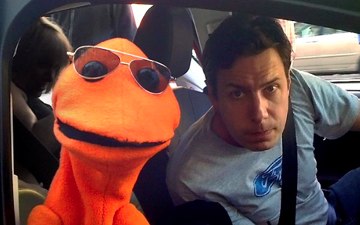 On the heels of its successful and well-received Ford Fiesta Movement and 2011 Explorer Facebook reveal initiatives, Ford has crafted yet another innovative social media campaign, this time to raise awareness and introduce consumers to the 2012 Focus.
On the heels of its successful and well-received Ford Fiesta Movement and 2011 Explorer Facebook reveal initiatives, Ford has crafted yet another innovative social media campaign, this time to raise awareness and introduce consumers to the 2012 Focus.
At the center of the campaign is Doug, an irreverent and absurd tweeting, Facebook updating and YouTube uploading sock puppet serving as the spokesperson for the new car.
Mashable spoke with Kelly extensively to get a behind-the-scenes look at the campaign and a progress report on how it’s going.
Read the full story here.
7. How SCVNGR’s First National Brand Partnership Scored Big During March Madness
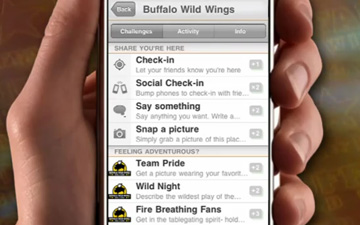 SCVNGR is a location-based gaming platform –- there are challenges at every venue, and businesses can also “script” their own challenges. Customers can do challenges (take a photo, eat a certain dish) to earn points, which are redeemable for real-world rewards, such as a free drink or 10% off. The Cambridge-based company launched in 2008, and was founded by a 22-year old Princeton dropout who wanted to add a game layer to the world. And that he did.
SCVNGR is a location-based gaming platform –- there are challenges at every venue, and businesses can also “script” their own challenges. Customers can do challenges (take a photo, eat a certain dish) to earn points, which are redeemable for real-world rewards, such as a free drink or 10% off. The Cambridge-based company launched in 2008, and was founded by a 22-year old Princeton dropout who wanted to add a game layer to the world. And that he did.
In January 2011, SCVNGR partnered with Buffalo Wild Wings (BWW) — at all 730 of its locations — for a 12-week campaign leading up to March Madness. The competitive game layer of SCVNGR worked well with the BWW patrons, who thrive on competition, community and games. SCVNGR’s SVP of Marketing Chris Mahl says that what differentiates SCVNGR from other location-based services is that it’s “not a checkin-based service, [but something] that goes further into brand goals [and] consumer goals.” The success of the campaign indicates that may be true. BWW was the first national SCVNGR promotion, and in the first three weeks, the game accrued nearly 30,000 players. By the end, the campaign had 184,000 players at 730 BWW locations.
Read the full story here.
8. The Voice: How a TV Show Became a 24/7 Social Media Conversation
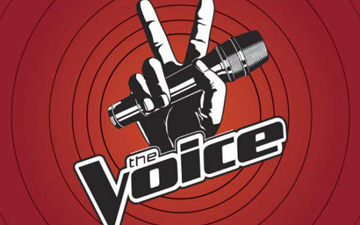 First there was scripted TV, then reality television became the “it” format. But now that’s getting old and stale, and the audience wants something new. The Voice delivers that, with a highly engaging and social co-viewing experience that’s earned it a spot as the top-rated new show this season. People are ready for a change in entertainment, and The Voice is providing a nice alternative.
First there was scripted TV, then reality television became the “it” format. But now that’s getting old and stale, and the audience wants something new. The Voice delivers that, with a highly engaging and social co-viewing experience that’s earned it a spot as the top-rated new show this season. People are ready for a change in entertainment, and The Voice is providing a nice alternative.
Mashable spoke with Nicolle Yaron, the show’s supervising producer, Andrew Adashek, the social media consultant, and Alison Haislip, the social media correspondent, about the show’s social media integration and why it’s effective.
Read the full story here.
 Follow
Follow Edge Shaving Gel’s #soirritating Twitter campaign spreads the word about its anti-irritation gel through random acts of kindness. Here’s an inside look at this creative play.
Edge Shaving Gel’s #soirritating Twitter campaign spreads the word about its anti-irritation gel through random acts of kindness. Here’s an inside look at this creative play. Toy Story 3
Toy Story 3 Charles Caleb Colton once said, “Imitation is the sincerest (form) of flattery.” Obviously, Mr. Colton was not talking about the success of the Old Spice campaign (seeing as how he lived during the 1700s), but we’re sure he would have reiterated that sentiment if he were to see how many spinoffs the aforementioned marketing miracle has inspired.
Charles Caleb Colton once said, “Imitation is the sincerest (form) of flattery.” Obviously, Mr. Colton was not talking about the success of the Old Spice campaign (seeing as how he lived during the 1700s), but we’re sure he would have reiterated that sentiment if he were to see how many spinoffs the aforementioned marketing miracle has inspired.
 Exactly seven years after their controversial split on Valentine’s Day in 2004, America’s favorite plastic lovebirds reunited, sending the socialverse down memory lane. In celebration of Ken’s 50th anniversary and just in time for the Valentine’s Day release of its
Exactly seven years after their controversial split on Valentine’s Day in 2004, America’s favorite plastic lovebirds reunited, sending the socialverse down memory lane. In celebration of Ken’s 50th anniversary and just in time for the Valentine’s Day release of its  On the heels of its successful and well-received
On the heels of its successful and well-received  SCVNGR is a location-based gaming platform –- there are challenges at every venue, and businesses can also “script” their own challenges. Customers can do challenges (take a photo, eat a certain dish) to earn points, which are redeemable for real-world rewards, such as a free drink or 10% off. The Cambridge-based company launched in 2008, and was founded by a
SCVNGR is a location-based gaming platform –- there are challenges at every venue, and businesses can also “script” their own challenges. Customers can do challenges (take a photo, eat a certain dish) to earn points, which are redeemable for real-world rewards, such as a free drink or 10% off. The Cambridge-based company launched in 2008, and was founded by a  First there was scripted TV, then reality television became the “it” format. But now that’s getting old and stale, and the audience wants something new. The Voice delivers that, with a highly engaging and social co-viewing experience that’s earned it a spot as the top-rated new show this season. People are ready for a change in entertainment, and The Voice is providing a nice alternative.
First there was scripted TV, then reality television became the “it” format. But now that’s getting old and stale, and the audience wants something new. The Voice delivers that, with a highly engaging and social co-viewing experience that’s earned it a spot as the top-rated new show this season. People are ready for a change in entertainment, and The Voice is providing a nice alternative.